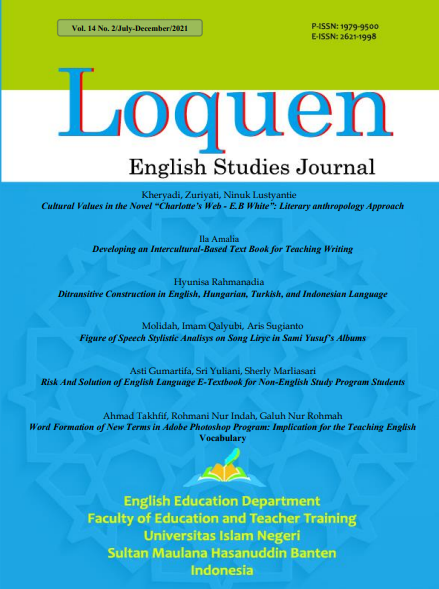Ditransitive Construction in English, Hungarian, Turkish, and Indonesian Language
 DOI:
DOI:
https://doi.org/10.32678/loquen.v14i2.5093
 Abstract viewed : 222 times
|
Abstract viewed : 222 times
|  pdf downloaded : 224 times
pdf downloaded : 224 times
Keywords:
ditransitive construction, cognitive grammar, comparative studyAbstract
Abstract: Every language shows a different way of expressing ditransitive construction. Thus, the present study aims to investigate and compare the important elements exhibit in the languages under discussion in constructing ditransitive sentences. This paper is a qualitative study. The data comes from detailed written grammar texts, corpora, and interviews with native language speakers. The results show that the languages play with the word order to weigh the focus of sentences. English and Indonesian language do not apply any case-marking to mark the function of the noun phrase. However, in the basic prototypical ditransitive construction, Hungarian and Turkish languages apply an accusative marker to mark the theme and a dative marker to mark the recipient. On the other hand, the verbs’ affixation also affects the semantic property of the ditransitive verbs in the Indonesian language. It is also revealed that the languages use the same ditransitive construction to express genuine transfer and beneficial transfer.
Keywords: ditransitive construction, cognitive grammar, comparative study.





















